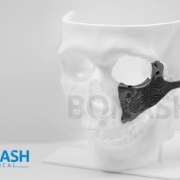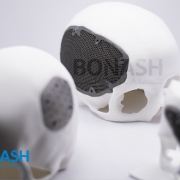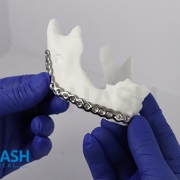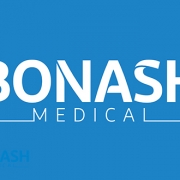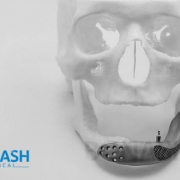Titanium 3D Printed Implants
Titanium 3D Printed Implants
There are few material that used in manufacturing of patient specific implants or generally as a solution for craniofacial reconstruction (Such as PEEK and PMMA). Titanium and its famous alloy – Ti6Al4V – are one of the most popular materials used for the production of 3d printed implants, because of its light weight, high strength, highly bio compatibility and very good osseointegration. 3D printed Implants do not interfere with computed tomography imaging and magnetic resonance imaging procedures which is a critical point due to postoperative follow up and cares.
Titanium 6Al4V (Grade 5) and 6Al4V ELI (Grade 23) are standard titanium alloys used for the manufacture of patient specific implants (custom made implants). There is also the possibility to manufacture implants additively from pure titanium (Grade 4), but the CPT (Commercially Pure titanium) mostly is used to manufacturing dental implants and in other field such as CMF (Craniomaxillofacial) or orthopedics surgeries, Ti6Al4V is the most popular material.

